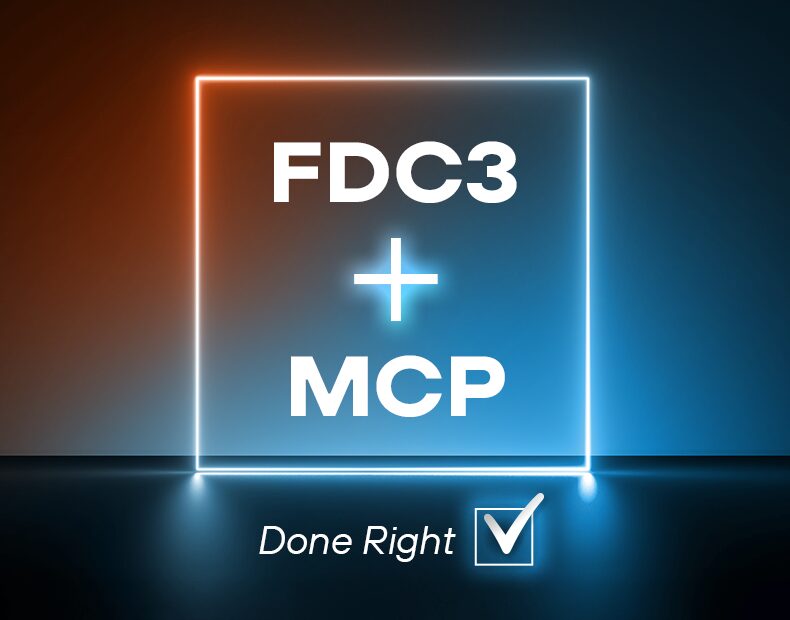
Human-Centered AI & Interoperability: Bring Intelligence into Workflows
AI adoption doesn’t have to mean disruption. Learn how interop.io embeds AI into existing systems — so you can scale safely, intelligently, and at your own pace.
Today’s organizations are eager to tap into powerful new AI capabilities. While agentic AI has the potential to transform entire workflows or businesses, it’s often complex to build and hard to trust. That’s why interop.io focuses on delivering value today — safely, quickly, and inside the systems your teams already use. By combining interoperability with human-centered AI, we help you enhance existing workflows while paving the way for future transformation.
What is Human-Centered AI?
Human-Centered AI ensures that AI is embedded into workflows as a smart, responsive assistant — surfacing relevant insights, taking action when prompted, and supporting decision-making throughout multi-step processes. When paired with interoperability, this approach allows AI to operate inside the applications, systems, and workflows your team already knows — making it quicker to adopt and safer to scale.
You may have heard this described as augmentation — and that’s exactly what Human-Centered AI delivers. It’s about empowering people today by enhancing existing workflows with intelligence that improves speed, precision, and confidence across the enterprise.
But augmentation isn’t the end goal — it’s the beginning. By establishing interoperable systems and collaborative AI now, you lay the foundation for trusted automation and agentic AI in the future — on your terms, and aligned with how your teams work best.
Is This the Same as Human-in-the-Loop?
There can be some overlap, as both approaches involve collaboration between humans and AI. But the key difference lies in when and how the human participates.
In Human-in-the-Loop systems, the process is designed around an AI acting independently, with the human stepping in primarily to review or approve the outcome. This model values autonomy in the AI, with the human serving as a checker or gatekeeper — typically at the beginning to set parameters, and at the end to approve or reject results.
This approach has become especially important alongside the rise of autonomous AI agents (also known as agentic systems), which are designed to perform tasks with minimal human involvement. In fact, these agents often act based on real-time data triggers — meaning the human may not even define or initiate the task. Instead, the human is brought in later as a supervisor or trainer, adjusting or validating outputs when needed.
Human-in-the-Loop is a critical safeguard in AI adoption. But when you add interoperability to the mix, the relationship between humans and AI evolves from one of oversight to collaboration.
In traditional Human-in-the-Loop models:
- Humans define a task for the AI to complete
- The AI works independently through the process
- Humans review and approve (or reject) the output
- The AI operates in isolation, and may even initiate actions based solely on data triggers — not human intent
interop.io supports a more integrated approach: AI and humans working side by side, inside the tools and workflows teams already trust.
With Human-Centered AI, humans:
- Work together throughout the entire decision-making process, using familiar tools and applications.
- Remain the central orchestrator of the workflow, with AI acting as a trusted assistant.
- Use AI to offer insights, assistance, and take direct action inside user applications in real time.
- Collaborate inside existing applications, interfaces, and standards (such as FDC3), instead of new platforms.
Interop & AI: Building a Strategic Foundation for the Future
Human-Centered AI isn’t just about what AI can do — it’s about how it supports the people using it.
interop.io makes this possible by embedding AI into the systems and workflows your teams already rely on. Rather than introducing entirely new platforms or workflows, interoperability allows AI to show up where the work already happens — making it easier to adopt, more intuitive to use, and better aligned with the way your teams think and operate.
This approach delivers strategic advantages:
- Keeps people in the driver’s seat: AI enhances decision-making by offering timely insights and suggested actions, while users remain the primary decision-makers throughout the process.
- Enables collaborative workflows: Rather than acting independently, AI becomes an active participant in the existing application ecosystem — coordinating across systems, surfacing relevant context, and supporting user-led actions.
- Fits into familiar environments: Because AI is delivered inside the tools your teams already know, it becomes part of established workflows.
- Scales thoughtfully: Interoperability allows AI capabilities to expand incrementally — aligned with team needs and organizational readiness.
Ready to Activate Human-Centered AI?
If you already have an interop platform in place — and especially if you’ve implemented a ChatUI — you’re closer than you think. Our MCP server bridges AI systems with your existing applications, enabling intelligent, contextual action without disruption.
This is good news for our clients who have already invested in interop-enabling their applications. They’ve laid the groundwork to safely AI-enable their workflows — quickly, and with minimal risk.
See what interop.io can do for your team.


